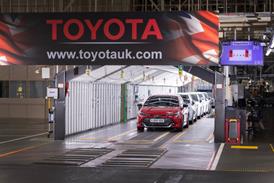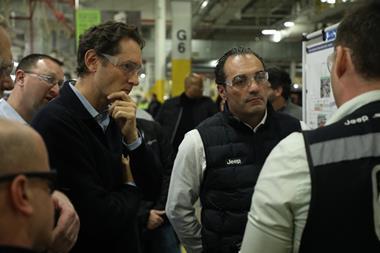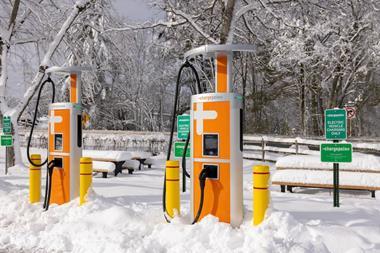
Rising labour and logistics rates could change the landscape of supply chain management in the automotive industry in China, it emerged last week at a special workshop organised by Automotive Logistics at the transport logistics China trade exhibition in Shanghai. On the other hand, a slowdown in the growth of new cars sales, together with a lack of consolidation in the sector, could lead to price wars that will put further pressure on logistics service providers.
While recent labour disputes at Honda affiliated plants in China have posed serious questions about the country’s cheap labour, for logistics providers this could mean Chinese workers, drivers and ground staff may soon ask for higher wages. According to David Dudek, automotive director in Asia Pacific for Ceva Logistics, higher rates already look to be a certainty, given the shortages in several areas of equipment, such as containers. Shipping line rates, for example, are likely to rocket this year on the back of a “huge, unexpected upturn” in export demand for Chinese-made products, said Dudek. While production of containers is expected to reach 1m units this year, he said that this supply would not reach the market in time for the peak in exports.
Airfreight rates are also rising drastically, according to Dudek, partly as a result of the air traffic disruptions following the volcanic eruptions in Iceland. The Drewry Air Freight Price Index, which measures air freight prices out of Shanghai, showed a post-volcano price hike of 18.5% between March and April. That put rates close to their peak set back in December and 64% higher than at the same time last year.
But while freight rates are moving upward, freight forwarders could find themselves cornered between higher costs for transport and price pressures from an automotive sector that still remains highly fractured. Dudek noted that although consolidation amongst OEMs is expected, it remains far from evident, with even more players entering the market. And although car sales in China are still rising, the growth is expected to cool this year. Dudek warned that this will lead to price wars amongst carmakers bidding to win over Chinese buyers, and hence put downward pressure on rates for logistics services.
Lack of national warehouse leads to inefficiency
While the sector has made improvements in efficiency, speakers also revealed that some processes remain poorly designed. China Post Logistics, one of the biggest state owned logistics providers in China, has a network of more than 30 provincial logistics service providers; however these providers lack a nationwide warehouse distribution centre, says Dr. Tian Xuejun, senior business manager at China Postal Express & Logistics Co. The lack of such a centre often leads to long delays.
Another example of a network that badly needs updating comes from Chrysler’s spare parts distribution division, Mopar. The OEM sources parts in China that are shipped to Chrysler in the US where they are centrally stored; however, that means that many are then re-shipped back to China for local distribution, a remnant of a system designed before Chrysler had become such a major presence in the market. Bryan Ji, manager of Mopar Supply Chain, says the company is planning to re-organise this approach.
Improving port connections
While Chrysler’s network design needs updating, one leg of it demonstrates the impressive infrastructure advancements that China has made at its key ports of import and export. Chrysler has a bonded parts distribution centre at the Yangshan port in Shanghai, a location set to become the benchmark for deep sea ports. Richard Xie, project manager of theShanghai Tongsheng Logistics Park Investment & Development Co – the 50% joint venture partner at the port – says that Yangshan is seen as such a major example of success that it benefits from special policies.
For example, the port has special relations with the US regarding container inspections. Parts exported from Yangshan are not stopped again at US ports, and instead are allowed to move directly to final destinations at plants or spare parts facilities.
Xie also revealed that Yanghan Port is planning a ro-ro terminal. While he was careful to point out that the project is still in planning stages, Mopar’s Bryan Ji indicated that Chrysler would use this port for finished vehicles when it was ready.
Collaborations and limitations
The workshop panel revealed some of the difficulties that are present in the current business structure of the Chinese automotive logistics sector, including navigating through joint ventures and or government-backed companies. According to Dr Tian Xuejun, China Post Logistics will enter the vehicle logistics sector for the first time with a local, private carmaker, partly because the company believes such a plan offers more opportunities than by using foreign joint ventures. “We are working with a local private brand as we find they outsource better than foreign JVs,” he said. He declined to name the brand.
Large Chinese OEMs usually have their own affiliated or owned logistics providers that handle domestic logistics for themsleves and their joint ventures. Likewise, foreign carmakers present in China bring with them their global logistics providers, making it difficult for Chinese logistics companies to enter the global market. But Tian said that collaborations with US Post and the Australian Postal services, plus links with Chinese international carriers, will give China Post the launch pad to spread its wings outside of the country.
Global service provider Ceva, on the other hand, has a well-established joint venture with Anji Logistics, a subsidiary of Shanghai Automotive Industry Corp. But in China, SAIC has considerable operational control. Dudek explained that their agreement stipulates that all contracts must be offered to the jv first. Only if it declines is Ceva allowed to take on the contract independently.








































